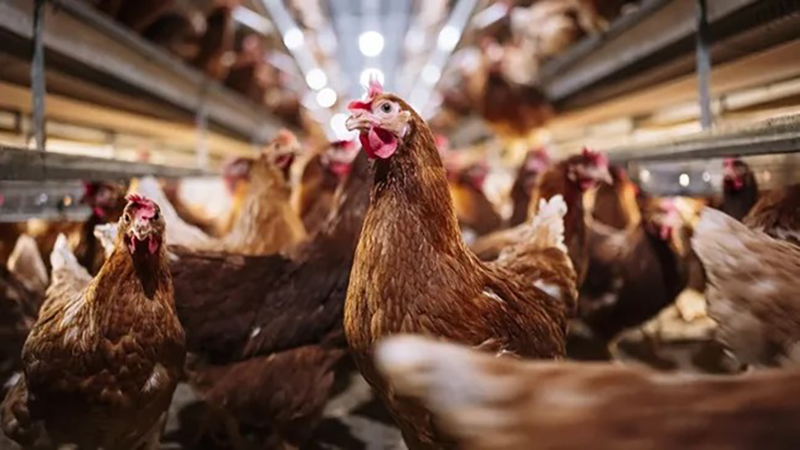So far, 17 US states have reported human cases of H5N1 bird flu, but there is no evidence of human-to-human transmission and the infections remain mild. Experts warn that bird flu could become more dangerous if it combines with seasonal flu viruses.
Bird flu appears to be on the rise in the US, but only in people who have been exposed to infected animals – namely cows and poultry.
Since April 2024, the US has seen 36 human cases of H5N1 bird flu across 17 states. Of those, 16 were in California, seven of which were diagnosed in the week ending October 20. That same week, six workers at an egg farm in Washington were also diagnosed with the disease.

Despite the growing number of reported cases, experts have yet to find any evidence of the virus spreading between people. Experts say H5N1 remains a low-level concern until it does.
However, a case has been reported that raised concerns among experts when a patient hospitalized in Missouri was diagnosed with H5N1 in August and health care workers who treated him developed similar symptoms. However, tests by the US Centers for Disease Control and Prevention (CDC) found that none of the doctors actually had the virus, ruling out human-to-human spread. The CDC reiterates that the risk to people who have not had contact with potentially infected animals remains low.
However, the continued spread of H5N1 raises a number of questions: Could the virus become more dangerous? Could it start spreading between people?
Could the virus become more dangerous?
Since the first H5N1 case in April, infections in the United States have mainly occurred in people working on poultry or dairy farms, all of whom have had mild symptoms, such as red eyes or a cough. At a CDC press conference on October 24, Eric Deeble of the US Department of Agriculture said the eye symptoms could be caused by feathers or other virus-containing material getting into the workers’ eyes.
Historically, H5N1 infections in humans have been much more severe. From the virus’s discovery in 1997 through June 2024, more than 900 people have been infected, and more than half of them have died. Egypt, China and Cambodia have reported the most cases.
The H5N1 strain in the United States appears to be less severe, but there are still too few human cases to draw firm conclusions about its virulence, said Francesco Branda, an epidemiologist at the University Campus Bio-Medico in Rome. Most of the cases in the United States have involved healthy farm workers, so it is unclear whether older people or those with other medical conditions have also developed mild symptoms.
The genomes of H5N1 samples from six cases in California showed no new mutations that could make infections more severe. “However, it is important to remember that influenza viruses are known to mutate rapidly, so this could change over time,” Branda said.
One worrying possibility is reassortment: If multiple strains of flu infect the same person, they can mix and match segments of their DNA, creating an entirely new strain. As the U.S. enters flu season, reassortment could occur in farm workers infected with seasonal flu and H5N1 at the same time. This could lead to the emergence of a new, highly virulent strain, potentially leading to an outbreak or pandemic. Reassortment created the virus that caused the 2009 swine flu pandemic.
Public health labs are testing for H5N1 in people who have been exposed to infected animals, such as cows and birds, and in people who test positive for influenza but negative for seasonal strains, like the Missouri patient.
However, as flu season begins, local labs may see an increase in routine flu testing. The patient in the US state of Missouri raised alarm bells because he said he had no contact with infected animals, raising the possibility that he may have been infected with H5N1 from a person.
However, “it is still possible that the exposure was from an animal or an animal product that we have not yet identified,” Demetre Daskalakis, director of the CDC’s National Center for Immunization and Respiratory Diseases, said at a press conference. Domestic cats, wild birds and unpasteurized milk are potential routes of exposure that cannot be ruled out.
Hà Thu (According to Live Science)
Source: Tiền Phong
